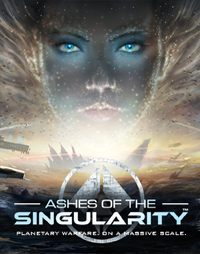Ashes of the Singularity Review – strategy, tactics, and bipolar AI
Ashes of the Singularity certainly delivers on what it promised: colossal engagements with thousands of units. The question is whether it’s enough to call it a truly unique RTS.
The review is based on the PC version.
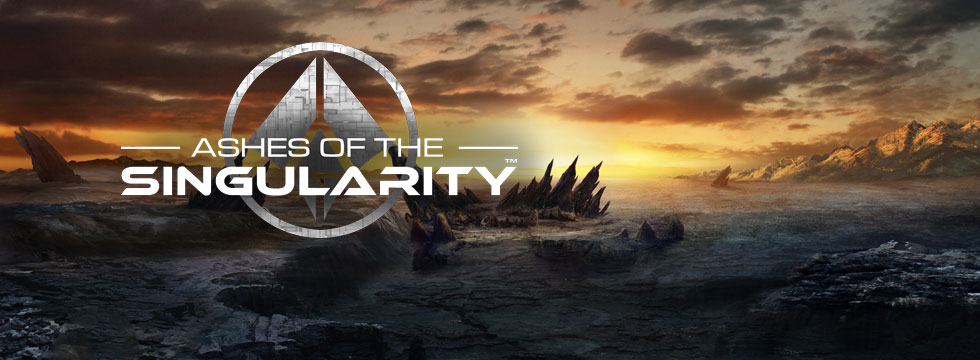
- Spectacular, large-scale battles;
- Very good multiplayer;
- It’s all about strategy;
- Maps designed to enhance the strategical layer;
- Sound effects, graphics and optimization.
- The story campaign is beyond redemption;
- Unpolished AI and single player;
- Tactical layer is uneven;
- It may be too difficult for casual RTS fans;
- Lacks visual variety between units, buildings, or even whole factions;
- Boring and repetitive map appearance;
- Dull interface.
Ashes of the Singularity is an RTS to the bone, designed for people who want their games to provide something more than spectacular battles, although you certainly cannot say that those are scarce in the production. On the contrary, there’s plenty of them and they are stunning. Unfortunately, many elements of Stardock's work are overshadowed by the fact that the developers have focused primarily on the strategic layer of their game, neglecting the tactical aspect. The consequences of this decision are numerous, with only some of them being positive. And the negative ones, unfortunately, are far more noticeable.
The game takes us to moderately distant future, namely the end of the 22nd century. People have abandoned their biological bodies and uploaded their awareness and intelligence into computer frames, from there on calling themselves the Post-Human Coalition. Furthermore, a new substance, turinium, was discovered, allowing this new, electronic intelligence to greatly increase its capabilities. Unfortunately, the usual human greed has spurred them to transform numerous other planets into said substance. Such a period of ravenous expansion could not have lasted forever. And here's where the other faction comes into fray – the Substrate, an AI trying to suppress the selfish humanoids.
The tendency to depict our species as a civilization hungry for raw materials and leading the world to destruction is becoming increasingly noticeable in video games and movies alike. To be honest, an original solution now would be to show the human kind in a positive light rather than going with the flow of the pop culture. Admittedly, the story does feature a certain amount of originality, but it is not particularly engaging content. The narrative chose the campaign as primary means of storytelling. Unfortunately, said campaign looks more like an extensive tutorial than a complete set of missions, and this fact certainly does not help the game. With that being said, the game does not particularly emphasize the story as such, although RTS games that can boast a great story and well-designed campaign are not that rare either.
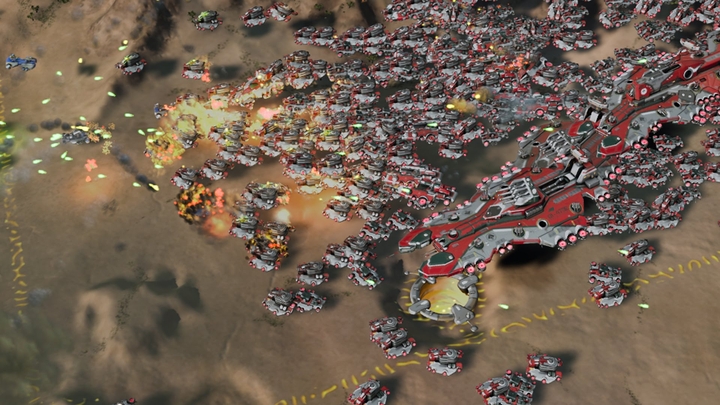
An RTS with issues
Some problems with the AI emerge both in skirmish mode and in single player campaign. In skirmishes against the computer, the AI's skill is very uneven, which becoms one of the game's major shortcomings. The computer can either allow us to do whatever we want, or steamroll us in the span of minutes. This would normally depend on our chosen difficulty level, but we are talking here about something that happens when switching from "easy" to "normal". As there are several other, even higher difficulty levels, I find it hard to believe that this is what the developers' intended to do. If we decide to look past the antics of the AI, we will either win the battles with little to no effort, or be doomed to lose them, regardless of the amount of sweat produced by our brain cells. In the beginning, the campaign leads us by the hand, lulling us into a false sense of security, only for the fourth mission to hit us like a ton of bricks. Some opinions on the Internet go so far as to say that the mission is outright impossible to complete. Still, it would be forgivable, if it actually felt like the events depended on our skills. In this case, however, "it has to be a bug" is the first thing that comes to mind, especially when we can see the computer play dirty, e.g. when the game gives us a few seconds before an air raid to build anti-aircraft guns, and it takes a lot more time to actually build them. These shortcomings, or perhaps should I say: this peculiar difficulty level design, makes it virtually impossible to have fun in the single player mode.
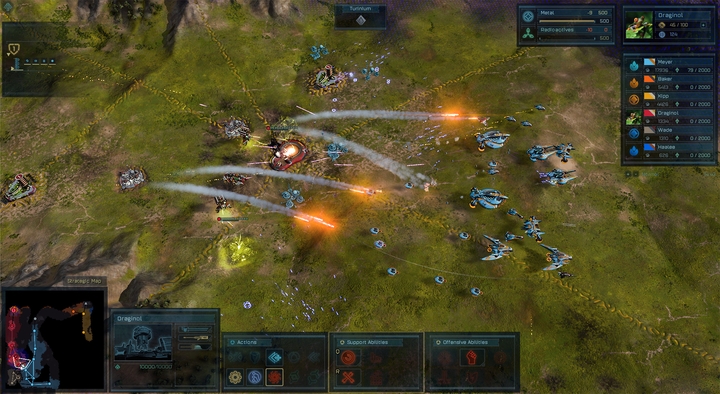
The only mode in which the game is able to spread its wings is multiplayer. It is here where Ashes of the Singularity shines, allowing the players to test their creativity and exploit mistakes made by the enemy. A strategy that will lead us to victory must incorporate more than just battlefield tactics, it also has to consider things like the selection of proper units, their coordination, resource management, and a strategically sound selection of places to strike, as well as many other aspects. The battles are often fought by thousands of units, and a larger force is not necessary to win a skirmish; the side that wins is the side that is better suited for the given task at the moment. However, we must remember that we are fighting not only using the military, but also the economy. Furthermore, we should always plan three steps forward. This is not a game where victory comes as a result of luck and playing by ear. Sometimes the outcome is decided the moment some wrong or right decisions have been made at the beginning of the round, or because the opponent did something we did not expect. Taking all of the above into account, we can be pretty sure that every skirmish we won was not by accident, and each subsequent victory will require a certain amount of creativity on our side. To be honest, players less familiar with the RTS genre may be discouraged seeing such an extensive strategic layer. All the more so if the issues with the AI in single player mode keep them from being able to train freely.
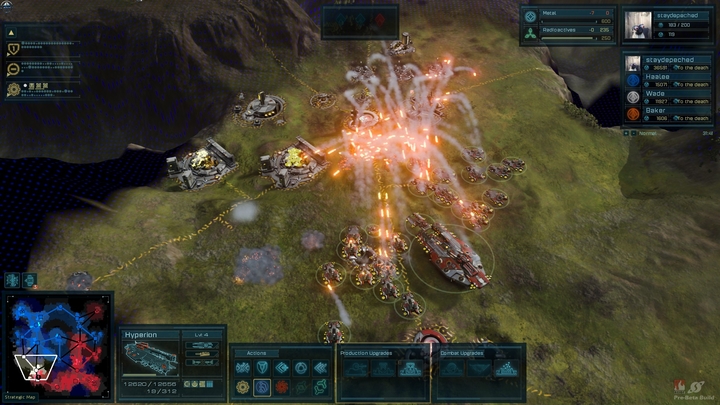
There’s no hiding the fact that the game is very uneven also on the tactical level. We build our units, then we can form them into armies that can be optimized for a particular purpose. Now, when a skirmish begins, the system performs flawlessly. The problem arises when the gameplay picks up the pace and we have to command a large number of formations. That's when things stop making sense, because we have to simultaneously give orders and queue the construction of new buildings and units, requiring finger coordination of a professional pianist and leaving virtually no time for anything else. And so the game which, according to its creators, aimed to emphasize the tactical side of things becomes a frantic clicker that has us sending battalions of whatever we are able to lay our hands on.
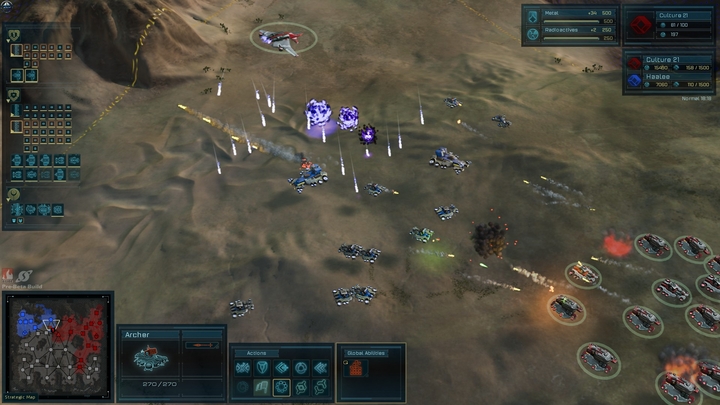
A lot of the same
While the scale of battles may be grand, their diversity is anything but. The limited diversity of units is somewhat surprising, given how many of them appear in nearly every match. The whole map may be consumed by fire and overflowing with the heat of battle, but wherever we go the scenery looks virtually the same. In addition, corresponding unit classes, for example the dreadnoughts (the strongest units in the game), are very similar to each other. Although the graphic designs in general leave nothing to be desired, the differences between, e.g. two dreadnoughts from different factions are meager at best. Besides, placing a large amount of land-based frigates and cruiser in one place results in the creation of something resembling an anthill, where it is impossible to see anything without resorting to zoom.
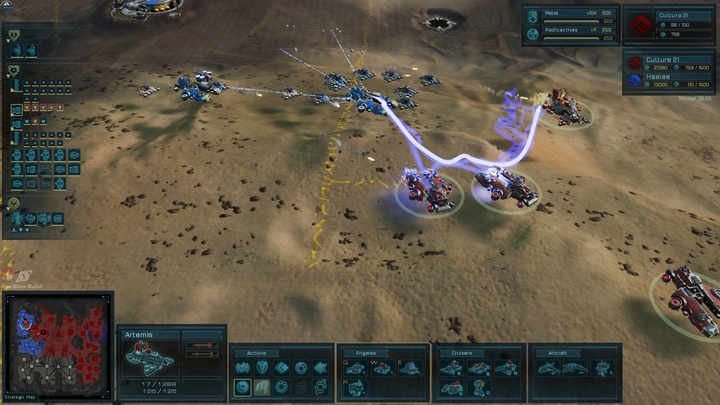
To do the developers justice, greater unit diversity would have probably resulted in an even less comprehensible battlefield, though perhaps some truly original designs might have solved the issue. Moreover, when looking at the UI you cannot help but fall under the impression that being understandable was not particularly high on the developers' priority list. The interface is not very user-friendly, especially at the beginning, and when it comes to the visual aspects... let's just say it could have been better. Right now we see some blue squares with a vague summary of the most important information in the game. It is even worse in the case of buildings. All buildings within a faction look very similar and it will take us some time before we will be able to recognize them on the fly. Building designs come off noticeably worse than the armies they build. Armies at least provide a pleasant aesthetic experience, though mainly when they appear in bigger numbers.
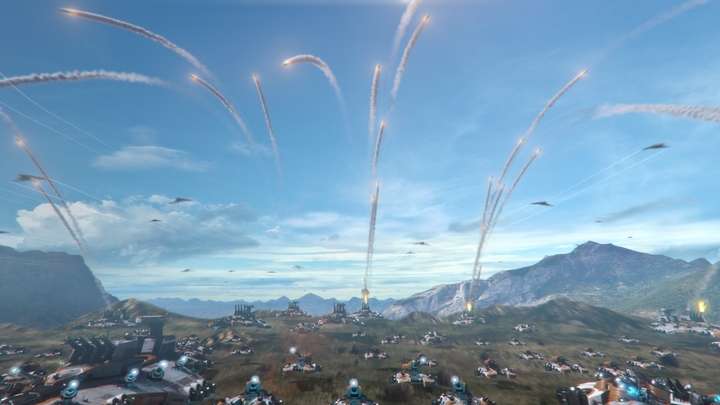
The fact that there are only two sides to the conflict does not help either. Units and buildings from different factions vary much more than the ones from within the same army, but I still feel that this is not enough. Both side are pretty similar plot-wise, and thus employ similar technology. At times, one gets the impression that the only thing that sets them apart is the color of the paint. But even this is not sufficiently emphasized to avoid a situation where, once ours and enemy forces mix in combat, we are not able to tell whether we are winning the battle or even how much of our army is still there. Units' combat capabilities are also quite similar. The PHC has slightly stronger basic units while the Substrate has the advantage when it comes to specialized units. In practice, however, they are almost identical and there is no point in developing dedicated strategies for one of the factions.
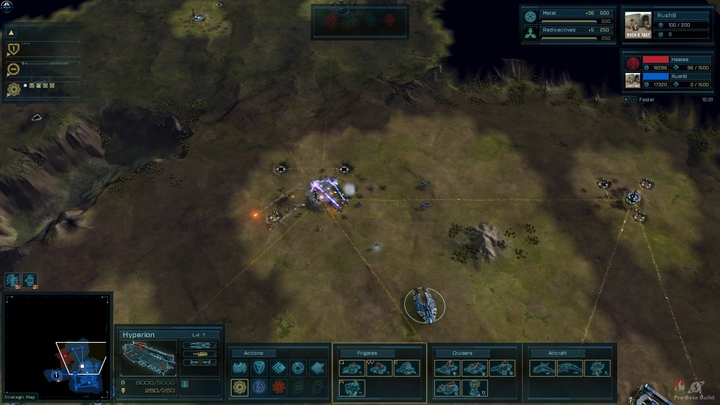
The visual design of the maps, however, is the one aspect in which the game is really appaling. We have white maps, green maps, and brown maps. The colors are of course snow, grass, and sand, respectively, but the lack of anything to decorate the maps with and the constant monotony, occasionally stirred by some (repeatable) mountains, are not something that would leave a good impression. Still, it should be noted that although visually the maps fall short, the strategic options they offer leave nothing to complain about. Raw material distribution (metal and radioactive substances) on the map directly affects the gameplay, and that's where creators have really put some effort, creating some truly interesting arenas, each of them requiring a completely different approach to achieve victory.
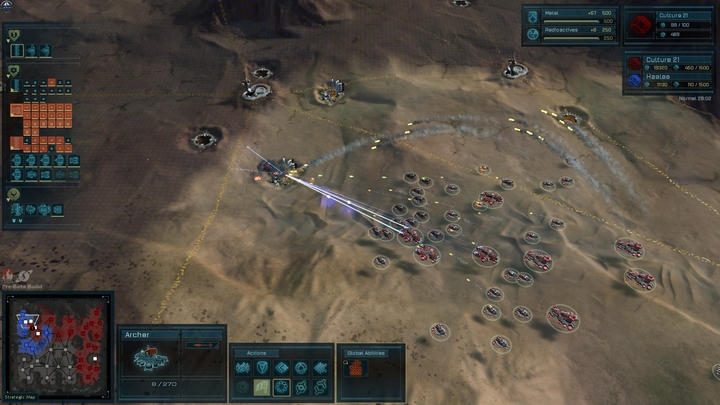
A feast for the senses
In terms of graphics, the game delivers in spades. For the players with the latest GPUs and Windows 10 await benefits brought in by DirectX 12 (for the time being only AMD products can employ its potential). The game experiences a significant jump in the number of fps when using DX12, which, together with high-end visual settings and the huge scale of battles, can provide a truly stunning spectacle. However, even the owners of older computers should not be disappointed. Even on lower settings the game looks very good, and its good optimization enables normal gameplay even on somewhat dated hardware. Additionally, the game comes with a benchmark that will check how well your computer can handle large-scale enagegements.
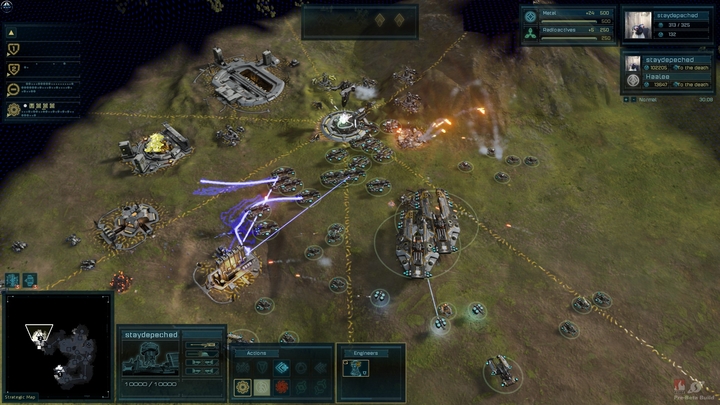
The music matches the atmosphere of the game very well. I would even go as far as to say that it is crucial in building that atmosphere from the very first moment. Unimposing during skirmishes, it does not distract from the gameplay. Sound effects, especially spontaneous noises made by various units, are another important ambiance-building factor. However, the experience is at its best first and foremost during the biggest of battles.
Summary
Ashes of the Singularity is definitely a game created for the veterans of the genre. It will appeal to those looking for entertainment AND challenge, those who would like to try a game where, through time and effort, they can join the elite circle of the most talented players. It’s not likely to be as successful as Supreme Commander, the comparisons to which come off as unavoidable. Both games are designed for the same type of players, so if someone liked SC, they will definitely enjoy playing Ashes of the Singularity. It needs to be emphasized, however, that the experience is spoiled by the issues present in single player mode, and it is in multiplayer where the game truly realizes its potential. In multiplayer the game excels at all the aspects that are crucial to a good RTS. Still, this doesn’t change the fact that at the end of the day the game feels simply unfinished.
Ashes of the Singularity
Ashes of the Singularity Review – strategy, tactics, and bipolar AI
Ashes of the Singularity certainly delivers on what it promised: colossal engagements with thousands of units. The question is whether it’s enough to call it a truly unique RTS.
